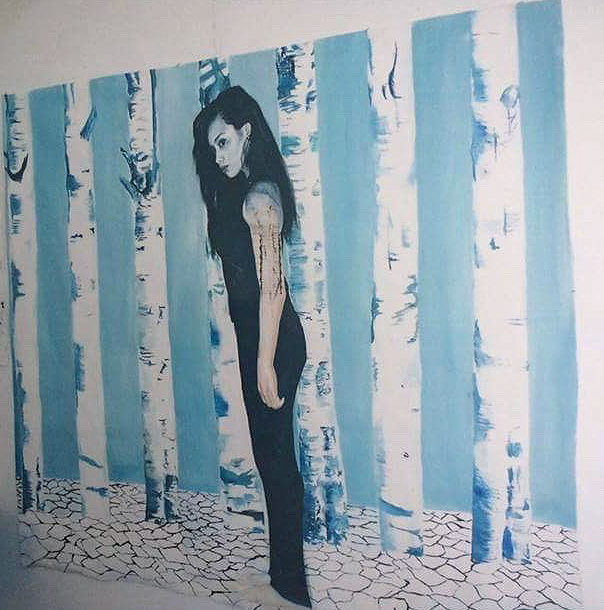
LinkedIn recently reminded me that January 2024 has marked 20 years of my being a professional fine artist.
My teachers were actually the first to buy my paintings while at school and I still remember being amazed that someone wanted to buy my artwork, even more so that it was my teachers.
There was a lot of interest in my art at school during that time and I was commissioned by my school to draw a picture for Professor Lord Robert Winston, after being selected as artist of the year. Professor Winston is a preeminent British scientist and presenter of the BBC programmes Child of Our Time and Superhuman.
In 2005, I won the Surrey County Council Art Award award for my project on ‘Vanishing Cultures’ (my school entered me without my knowledge!), which was a self motivated project that highlighted my interest in the gradual effacement of indigenous identities in the face of globalisation and consumerism. By raising awareness of the need for mutual understanding, I hoped to help preserve not just their legacy but also that of humanity, as we are all custodians of one fragile planet.
The project initially evolved as a result of my seeing some students at school getting tattoos depicting Japanese calligraphy without understanding its meaning, their only concern was that it was perceived as a mark of social status. After researching the significance of tattoos and other cultural emblems in certain societies, I realised that their meaning was lost when adopted by another society. I began exploring ‘vanishing cultures,’ a topic already of interest to me as a result of my subscription to the National Geographic magazine. I wanted to highlight the gradual effacement of a strong cultural identity and connection to history, retained most significantly by members of indigenous communities. My project aimed to resist a generic modern culture, whilst maintaining a dialogue between diverging communities and their personal histories.
I discovered a beautiful photo of a Filipino tribal girl in the National Geographic magazine and being of English and Filipino heritage (amongst others), I wanted to represent the closeness and distance of my knowledge with that of indigenous peoples. I decided to paint the tribal girl’s tattoo on my sister’s arm; we frequently used each other as muses but this was especially significant as it was in a sense a self-portrait, but also an objective painting. The Tatak ng Alon tattoo (‘wave imprint’ in Filipino) is symbolic for the tribe and the wearer as each tattoo has a meaning and significance for the individual, consequently that meaning would be lost if adopted by another culture or inscribed on another person. The fact it is being washed away on my sister’s arm represents the gradual disappearance of that history when appropriated without an understanding of the said culture.
Indigenous cultures only disappear when external forces, such as the deforestation of rainforests, engulf them. The final piece aimed to project a future without these cultures and the loss of their knowledge; it depicted a barren and drought devastated environment, akin to a photographic negative. Without the knowledge specific to a particular location, all significance is lost to the interpreter and that knowledge vanishes.
The final painting was on display at my school from 2005-2012 when I wanted to reclaim it for my portfolio.
You can find out more about the project here: